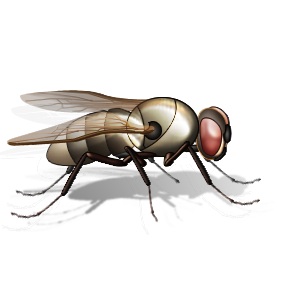
This web page was produced as an assignment for an undergraduate course at Davidson College.
Fly Microbiome Regulates Development and Metabolism

Image courtesy of Microsoft Clip Art
Introduction to: Drosophila Microbiome Modulates Host Developmental and Metabolic Homeostasis via Insulin Signaling
The human body has more bacterial cells living within it than it does human cells. Most of these reside in our digestive tracts. Although we are beginning to appreciate the importance of our bacterial component, called our microbiome, we know very little about the effects it has on and the interactions it has with our bodies.
In this paper, the authors used the common fruit fly, Drosophila melanogaster, as a model organism. Flies normally have five different bacterial species in their gut. The authors manipulated both the bacteria present in the fly gut and the supplements fed to fly larvae to determine the mechanism by which the fly microbiome modulated fly development and metabolism.
The paper consists of a series of experiments, each of which were logically precipitated by observations from the previous experiment. That is, the paper tells a story or inquiry and investigation to lead to its conclusions. So, to best understand the authors' thought process, we must follow their data from figure to figure. The motivation to perform each subsequent experiment is describe above each figure. Below each figure is a summary of the figure.
Reference:
Shin, C. S., Kim, S., You, H., Kim, B., Kim, A. C., Lee, K., Yoon, J., Ryu, J., Lee, W. 2011. Drosophila Microbiome Modulates Host Development and Metabolic Homeostasis via Insulin Signaling. Science. 334: 670-674.
Genomics Page
Biology Home Page
Email questions or comments to chford@davidson.edu
© Copyright 2011 Department of Biology, Davidson College, Davidson, NC 28035